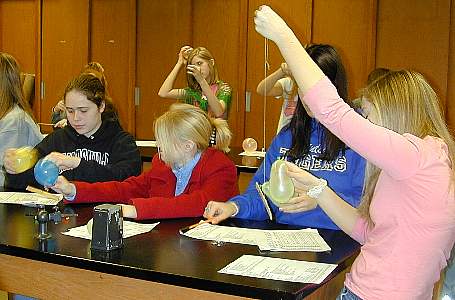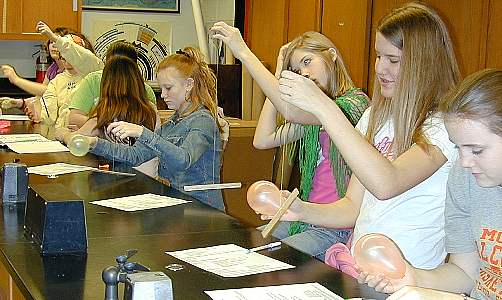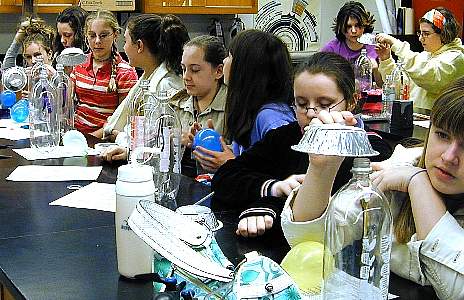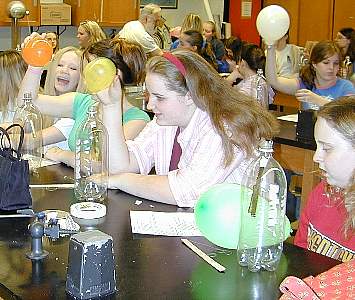Shocking
Science
Nancy
and I had the opportunity to help with the Girls in Science, Girls in
Research program again. This time the sessions were held at
Pikeville College. The girls tried to duplicate
some of the
experiments that early researchers conducted. Then they all
had
the chance to see what it felt like to be charged up to several hundred
thousand volts and then what happened when they were suddenly
discharged. Not all of them were brave enough, but most tried
it.
Here they were checking the attraction of opposite charges.
First charge a balloon by rubbing it on fur or hair. Then
hold it
near a stick suspended on a string. The negative charge on
the
balloon induces a positive charge on the part of the stick nearest to
it which is then attracted to the balloon. By quickly moving
the
balloon when the stick approaches it, the stick can be set spinning.


Here they are carrying
electrons in a
pie pan supported by a plastic straw insulator.
They held the pie pan near a charged balloon. Then they
touched
it with their finger to let the electrons that were repelled by the
charge on the balloon move away. Taking their finger off of the pie pan
then traps the charge on it. Since there are fewer negative
charges on it than before it is positively charged. They then
used an electroscope made from a pop bottle, a paper clip and a strip
of aluminized mylar gift wrap to detect the charge. We also
discovered that the charge could light a fluorescent light bulb, very
briefly (just a blink).


The Van de Graaff uses a
similar
principal to carry charge from the bottom to the sphere on the
top. Several hundred thousand volts can be developed with one
this size if conditions are right. We saw how discharges
could
light fluorescent bulbs held by our intrepid experimenters and how the
light from discharges in neon and xenon were different
colors.
They saw how charges could pass through the air and power a pair of
bells. But the real hit was when they stood on an insulating
platform and discovered that each strand of hair repelled every other
one when they were charged. I have never before had this
demonstration work this well.
We then turned our
attention to the
science of cryogenics. You can see some of the experiments here.
We finished the session by making ice cream in 30 seconds then enjoying
the product of that experiment.
Go
to our Science
Fun page
Go to our Travels page
Go
to our Personal
home page
Go
to our Community
page
E-mail Nancy
and
Alan